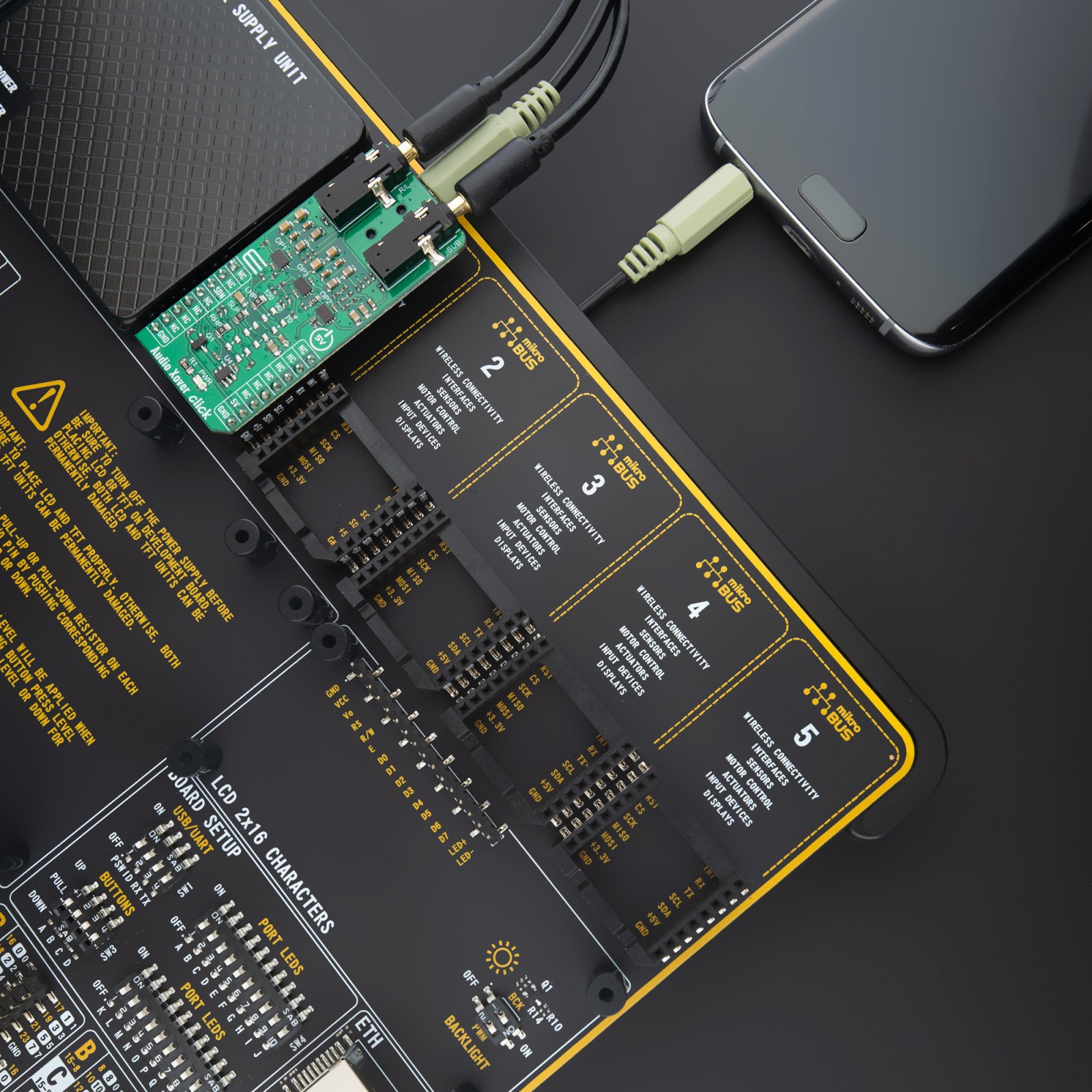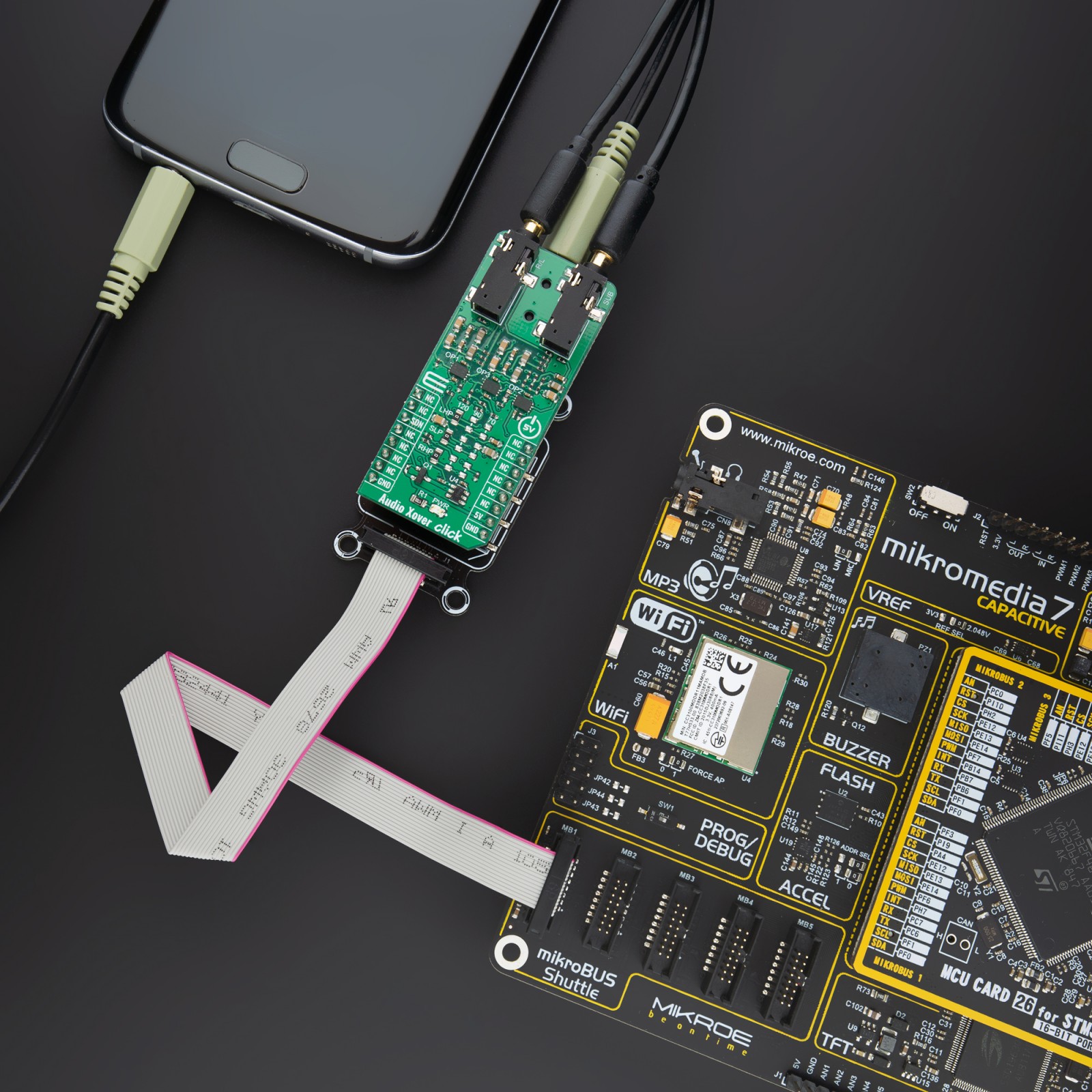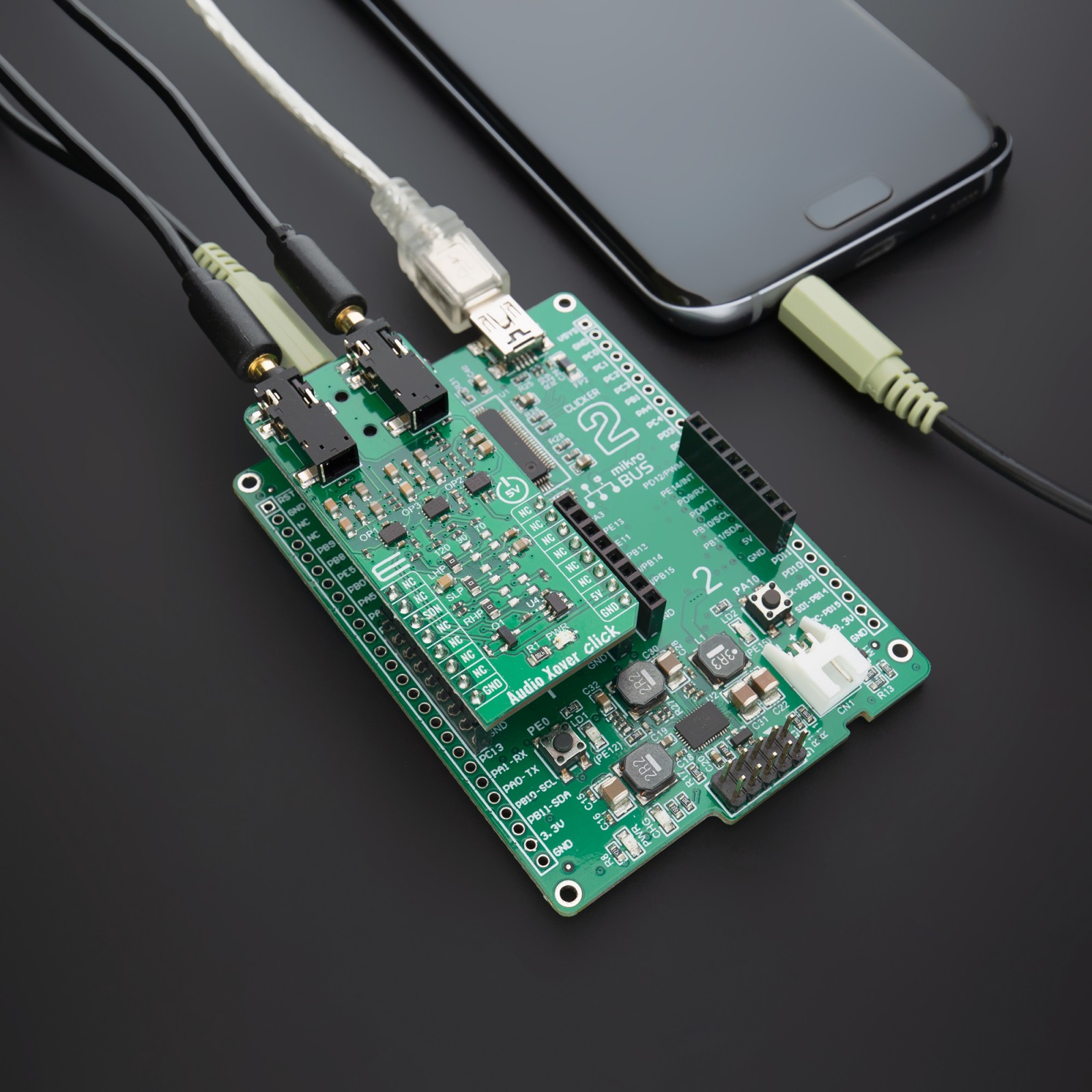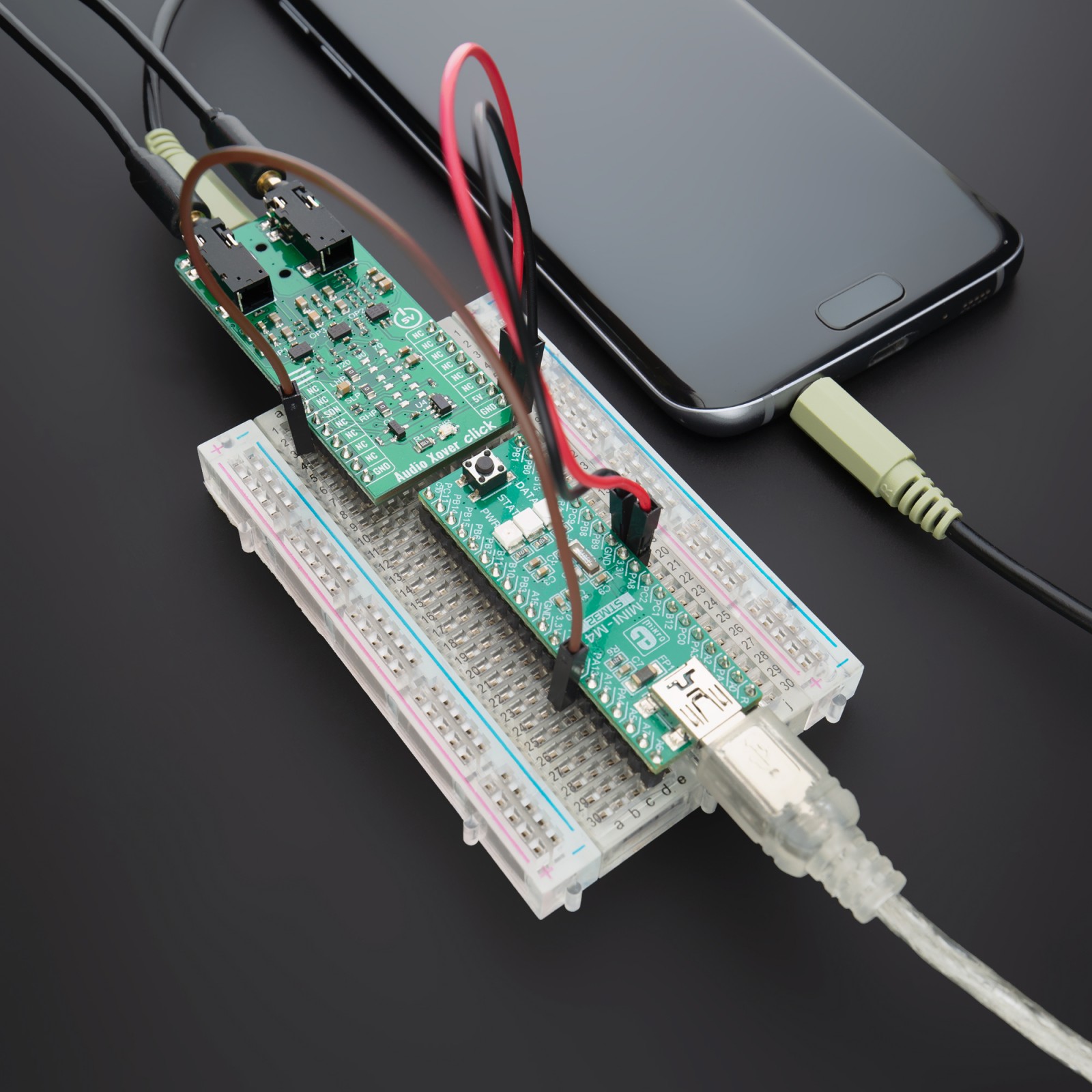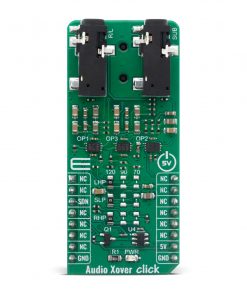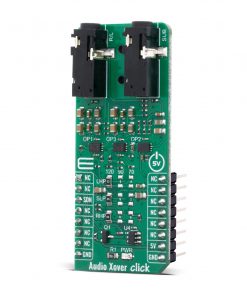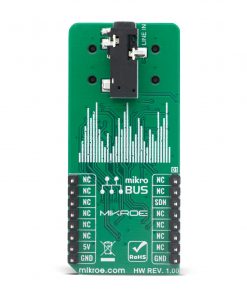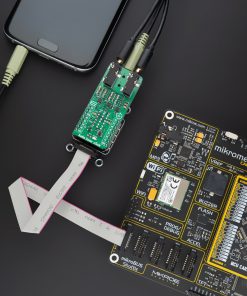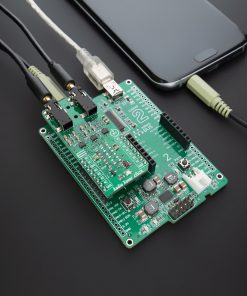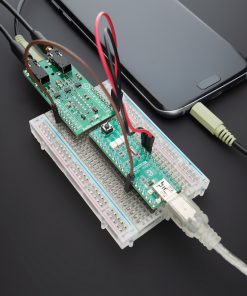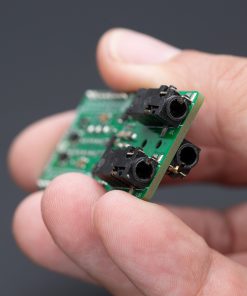Subtotal: R2,130.00
Audio Xover Click
R615.00 ex. VAT
Audio Xover Click is a compact add-on board designed to manage frequency distribution across speakers in audio systems. This board features three precise Butterworth filters and does not rely on a main IC component. The board offers adjustable cutoff frequencies of 120Hz, 90Hz, and 70Hz, ensuring a maximally flat frequency response with sharp roll-off using a second-order, two-pole design with a damping ratio of 0.707. Its active crossover design splits the audio signal before amplification, providing power independence, temperature stability, and channel isolation. Ideal for home audio systems, professional PA systems, recording studios, and automotive audio systems, Audio Xover Click optimizes sound quality by directing frequencies to the appropriate speakers.
Audio Xover Click board™ is supported by a mikroSDK compliant library, which includes functions that simplify software development. This Click board™ comes as a fully tested product, ready to be used on a system equipped with the mikroBUS™ socket.
Stock: Lead-time applicable.
| 5+ | R584.25 |
| 10+ | R553.50 |
| 15+ | R522.75 |
| 20+ | R503.07 |

 GSM-GPS Click
GSM-GPS Click  BUZZ Click
BUZZ Click  MPU 9DOF Click
MPU 9DOF Click 


